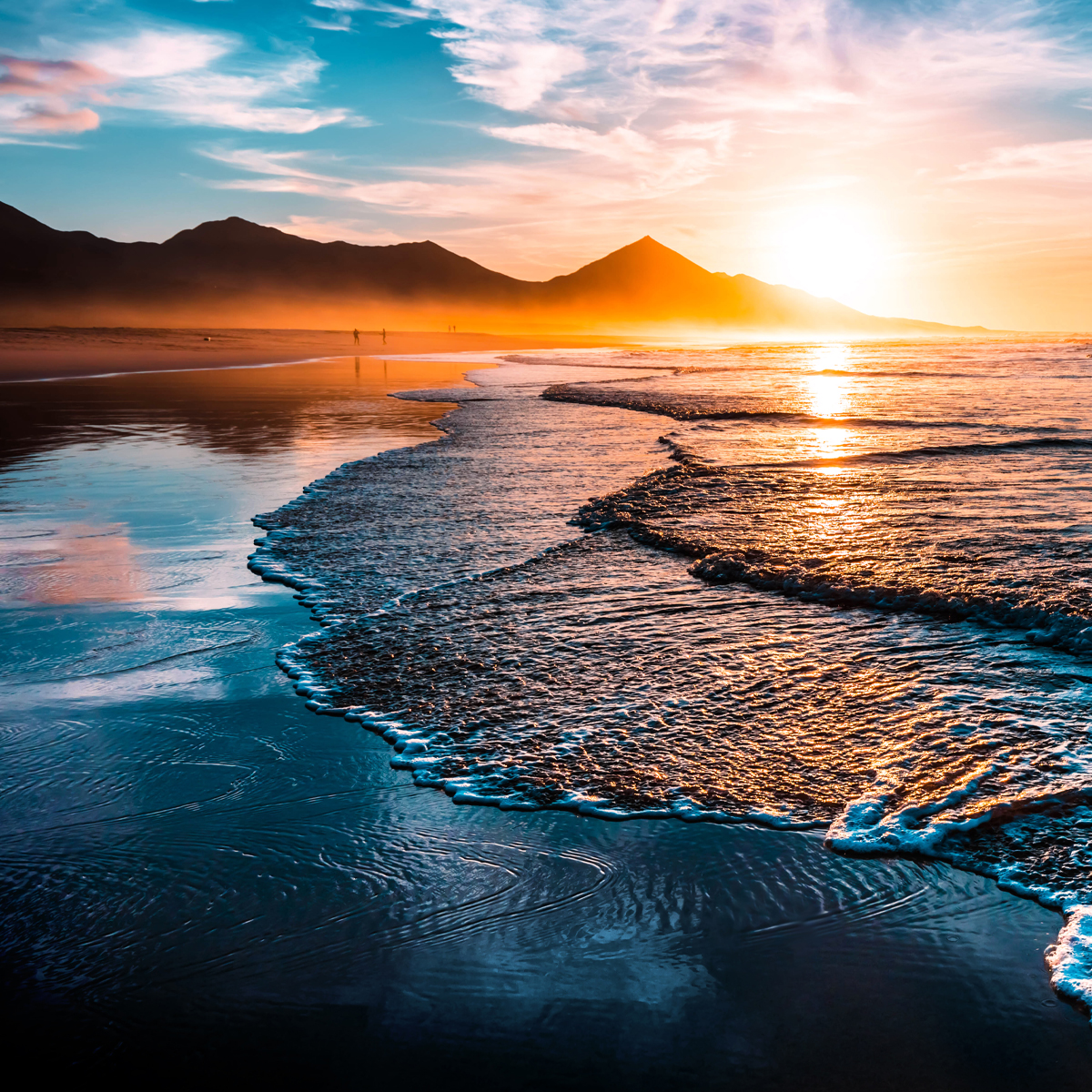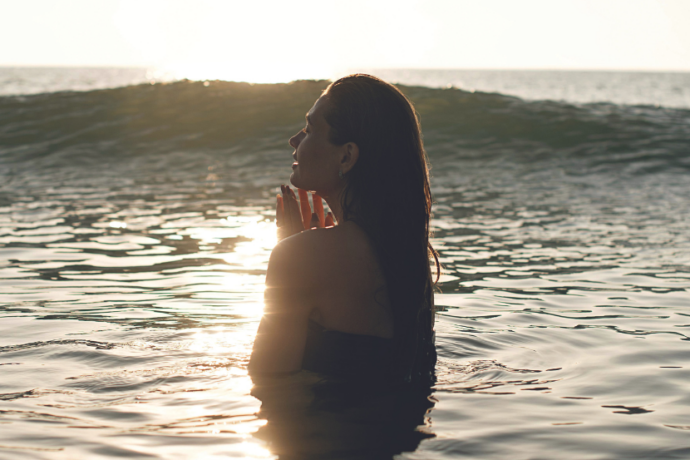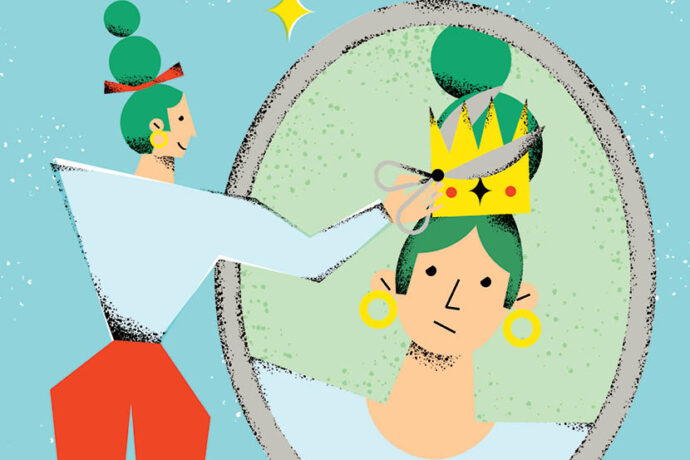
Time spent near the ocean is a great way to reconnect with the inner self and find peace in a chaotic world
Picture the scene: you step down from the concrete steps and onto firm, white sand. You can feel the gritty texture between your toes. You walk forward slowly, allowing each footfall to place distance between you and the world of emails, phone calls, and the constant news stream that you left behind when you shut the front door this morning. Each and every step takes you towards the sound of the sea.
Before long, you are a million mindful miles away from the busy life you entered when you woke up and started scrolling through social media. The clatter of your world begins to recede. In its place you begin to focus on the beach beneath your feet – small stones, shells, fossils. You slow your pace, focused and aware. You are fully in this moment. There is nothing but the water, the sand, and the simple beauty of small things.
The ocean means different things to different people. Walk along many a beach nowadays and you’re as likely to see windsurfers, bodyboarders, and yogis practising downward facing dog as you are dog walkers throwing sticks for excited canines to retrieve.
Whatever the reason for going there, the ocean’s smells and sounds invariably evoke powerful memories and elicit strong emotional responses. The scrape of a bucket and spade on the sand; the sharp, salty smell of fish and chips; shrieks of laughter from children, splashing in the surf. All bring back memories. For many, these will be of happy, relaxed family days, enjoying the sense of freedom holidays bring. And memories are powerful – a positive recollection is like a touchstone for emotional peace. It’s one of the reasons why being near the ocean can benefit wellbeing.
A stroll along the beach can provide a natural antidote to stress – the clear, unobstructed light lends positivity to one’s mood. And consciously practising mindfulness as you walk can make it all the more powerful. It needn’t be a strenuous or ritualised route. It’s about being mindful and noticing your surroundings, with the negative inner commentary switched off.
This will enable body and mind to be fully aware of the environment, without judging it.
Beachcombing is a good example. Several things happen when a person purposefully combs the beach for objects: a physical slowing down of the body and a focused gaze on the small things – pebbles, fossils, shells and discarded objects that would otherwise go unnoticed. The change of perspective is almost unspoken. The message? Even tiny things are beautiful in their own right. By focusing the mind on this idea and physically responding to it, the beachcomber enjoys a natural spell of mindfulness.
Make a trip to the ocean – you can reap the benefits just by sitting close enough to hear the sounds of the lapping waves. Simply quieten the inner voice, allowing the soundscape to wash over your mind. When you leave, ‘take’ the beach with you – store its sounds, smells, images and lightness in your mind.
And when anxiety strikes – the constant striving and comparison that is part of the modern psyche – revisit this inner memory and find your own oceanside calm in the chaos of life.
SEASIDE SLOWDOWNS
Five ways to practise mindfulness on the beach – each of the exercises should be performed for around 10 minutes (or whatever you’re in the mood for).
1. Beach bench meditation
Find a place to sit where you can hear the sounds of the ocean. A bench is perfect, but a big rock, a beach blanket or even just sitting in your car seat with the windows down will do. Place both feet flat on the ground and make sure you’re comfortable. You don’t have to close your eyes, but it can help to eliminate any distractions. Allow the sounds around you to drift into your mind. Don’t try to control them. Every time your inner voice pipes up, imagine it blowing away on a salty breeze.
2. Sea-rhythm breathing
Sit comfortably, as above. Listen to the rhythm of the waves. Breathe in and out, echoing the ebb and flow of the water. Focus on your breathing, matching it to the ocean. It should be roughly a count of six on the inhale and the same on the exhale. As you’re breathing, allow the thoughts and experiences of your day to rise through you and imagine the waves carrying them out to sea.
3. Found-object focus
Allow yourself to be drawn to an object. It could be a pebble, a shell or piece of driftwood. It might even be a building, rock or tree. Allow your focus to rest gently on the object. Even if it’s a surf club that you’ve seen before, look at it as if for the first time and visually explore its every facet. Imagine the object in the world and then being part of the world. Then think of yourself being in the world and being part of the world.
4. Walking meditation
Begin walking along the beach. Imagine there is no destination and that walking is the point. Slow your pace down so that it becomes deliberate – each movement an act of focus. Allow yourself to become immersed in the movement, focusing entirely on the physical sensations.
5. Touch point
Once on the shore, remove your shoes. Put both feet on the sand and concentrate on how the surface feels on your soles, the part of you that is physically grounded in the world. Focus on your feet and think about the texture of the sand – is it smooth or coarse, warm or cool, light or heavy? Feel the ebb and flow of the ocean as the waves come in and are drawn out. Close your eyes and, if it’s safe to do so, immerse yourself in the feel of the sand on your feet – wriggle your toes. Then enjoy the memories and images it evokes.
Words: Wendy Pratt
This article was originally published in Issue 19 – Global heart-warming



















